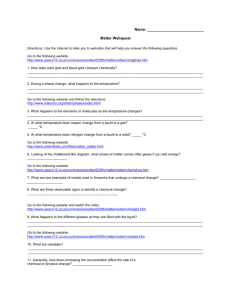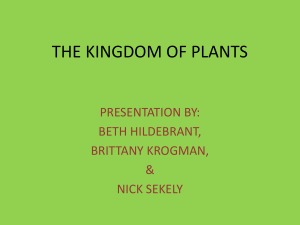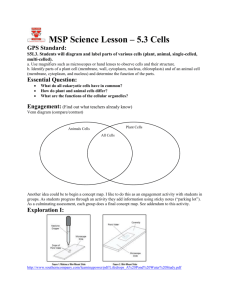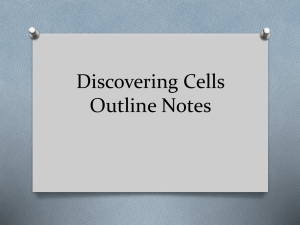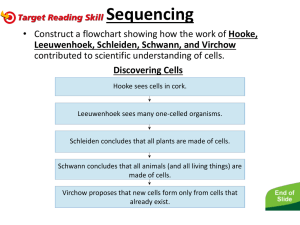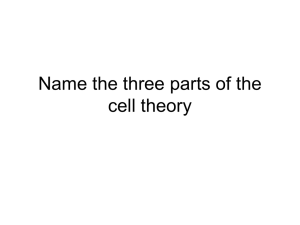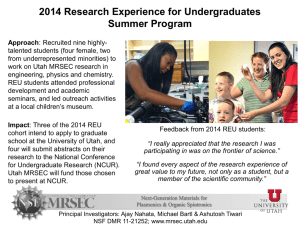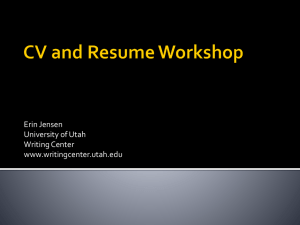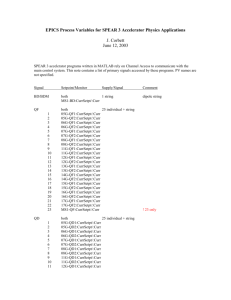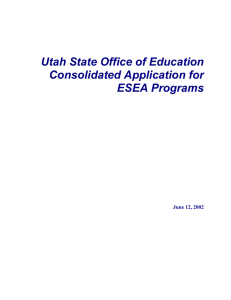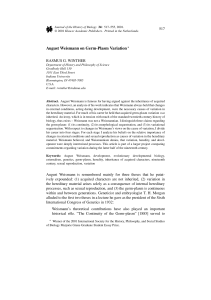Timeline of Cell theory 3
advertisement
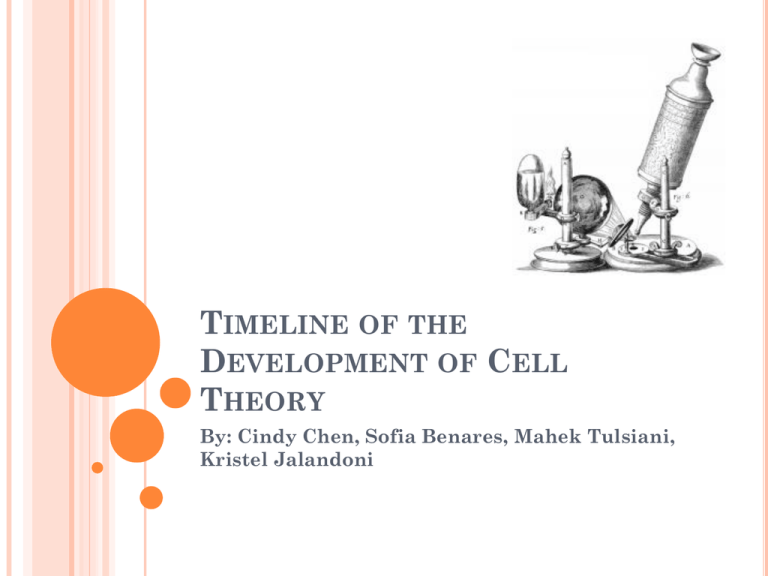
TIMELINE OF THE DEVELOPMENT OF CELL THEORY By: Cindy Chen, Sofia Benares, Mahek Tulsiani, Kristel Jalandoni 1595 Hans and Zacharias Janssen created the first compound microscope 1665 Robert Hooke observed cells in a thin slice of cork. 1680 Anton van Leeuwenhoek observed living cells in scrapings of teeth, rainwater and blood. 1838 Theodor Schwann (biologist) and Matthias Schleiden (physiologist) discover together that both animal cells and plants cells have nuclei. 1839 Theodor Schwann and Matthias Schleiden formulate cell theory. 1839 Schwann publishes 'Microscopic Investigations on the Accordance in the Structure and Growth of Plants and Animals', outlining cell theory. 1855 Rudolf Virchow stated that all living cells come only from other living cells 1886 August Weismann puts together cell theory with evolutionary theory CELL THEORY The theory that all living things are made up of one or more cells. http://www.lycos.com/info/matthias-jakob-schleiden.html MATTHIAS SCHLEIDEN 1814-1881 German botanist Wrote “Contributions to Phytogenesis” Professor of Botani at University of Tartu http://www.lycos.com/info/matthias-jakob-schleiden.html http://www.cbu.edu/~seisen/SelectedEventsBiologicalSciences.htm THEODOR SCHWANN (1810-1882) German physiologist/zoologist Formed cell theory with Matthias Schleiden Published 'Microscopic Investigations on the Accordance in the Structure and Growth of Plants and Animals‘ http://www.takdangaralin.com/science/scientists/scientist-theodor-schwann/ RUDOLF VIRCHOW Oct. 13, 1821 - Sept. 5, 1902 German pathologist and statesman, one of the most prominent physicians of the 19th century. He pioneered the modern concept of pathological processes by his application of the cell theory to explain the effects of disease in the organs and tissues of the body. http://www.britannica.com/EBchecked/topic/629797/Rudolf-Virchow http://www.schools.utah.gov/curr/science/sciber00/7th/cells/sciber/cellhist.htm AUGUST WEISMANN Jan. 17, 1834 - Nov. 5, 1914 German biologist and one of the founders of the science of genetics, who is best known for his opposition to the doctrine of the inheritance of acquired traits and for his “germ plasm” theory, the forerunner of DNA theory. http://www.britannica.com/EBchecked/topic/639121/August-Friedrich-Leopold-Weismann HANS AND ZACHARIAS JANSSEN •Dutch father and son •Lens grinders •Created the first compound microscope (with 2 lenses) in 1595 "History of Cell Discoveries." Utah State Office of Education - USOE Welcome. Web. 16 Aug. 2010. <http://www.schools.utah.gov/curr/science/sciber00/7th/cells/sciber/c ellhist.htm>. ROBERT HOOKE July 18, 1635 – March 3, 1703 •English •In 1665, he observed tiny, hollow, room-like structures in a thin slice of cork which he called ‘cells’ because they reminded him of the cells of a monastery •Only saw the outer walls because they were not alive "History of Cell Discoveries." Utah State Office of Education - USOE Welcome. Web. 16 Aug. 2010. <http://www.schools.utah.gov/curr/science/sciber00/7th/cells/sciber/c ellhist.htm>. ANTON VAN LEEUWENHOEK Oct. 24, 1632 - Aug. 26, 1723 •Amateur scientist; originally a fabric merchant •Dutch •Observed blood, rainwater and scrapings of teeth through a simple microscope with one lens in 1680 •Observed living cells that he called ‘animalcules,’ some of which are now called bacteria "History of Cell Discoveries." Utah State Office of Education - USOE Welcome. Web. 16 Aug. 2010. <http://www.schools.utah.gov/curr/science/sciber00/7th/cells/sciber/c ellhist.htm>.
